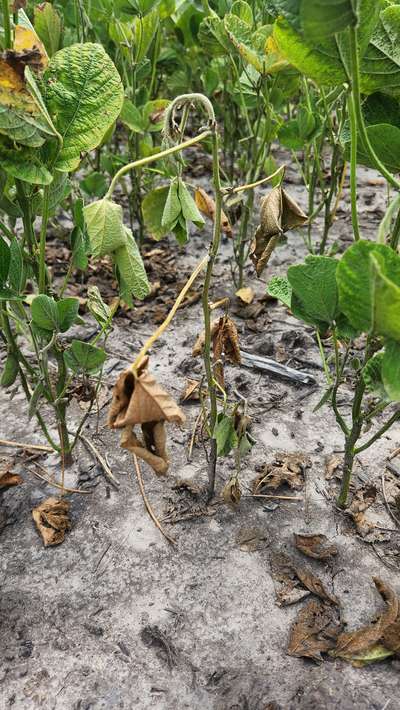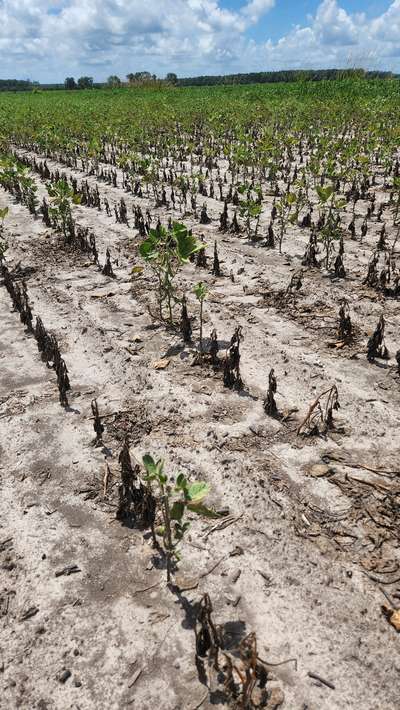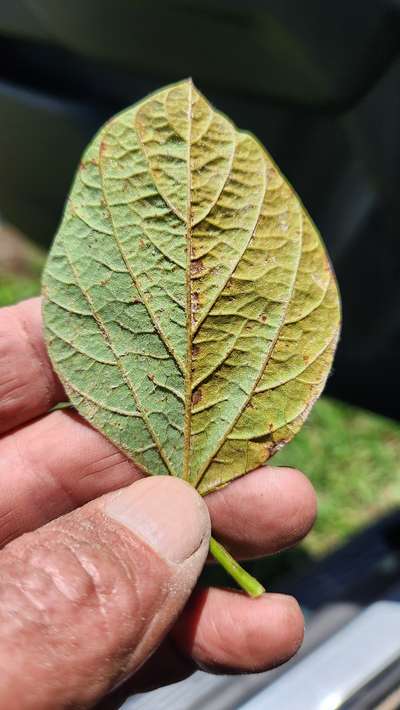Charcoal Rot & Soybean Stem Canker
scouted July 10, 2024
- Background
- Soybeans were scouted at the R1 growth stage and wilt, plant death, leaf discoloration, defoliation, and root decay were observed in patches across the field. It is important to note, that this environment has been very hot and dry prior to scouting.
- Conclusion
- This issue was confirmed by the NC State Plant, Disease and Insect clinic to be Soybean Stem Canker caused by Diaporthe, and Charcoal Rot caused by Macrophomina phaseolina. Charcoal rot is soil and seed borne fungus that favors dry, stressed conditions. Symptomology associated with charcoal rot can include brown spots on cotyledons, red/brown circular lesions on leaves that turn dark brown/black, and light brown/grey lesions on stems. No-till environments or irrigation are cultural practices recommended to preserve or increase soil moisture. Varietal resistance is an important factor in managing Charcoal rot. Symptomology associated with soybean stem canker can include reddish-brown lesions on the main stem at the base of a lower stem, small black spots that appear on dead tissue, and dead leaves that remain attached to the stem. There are not options to remedy this issue in this season, however you can best manage this disease with resistant varieties and crop rotation to non-host crops such as corn or wheat.




